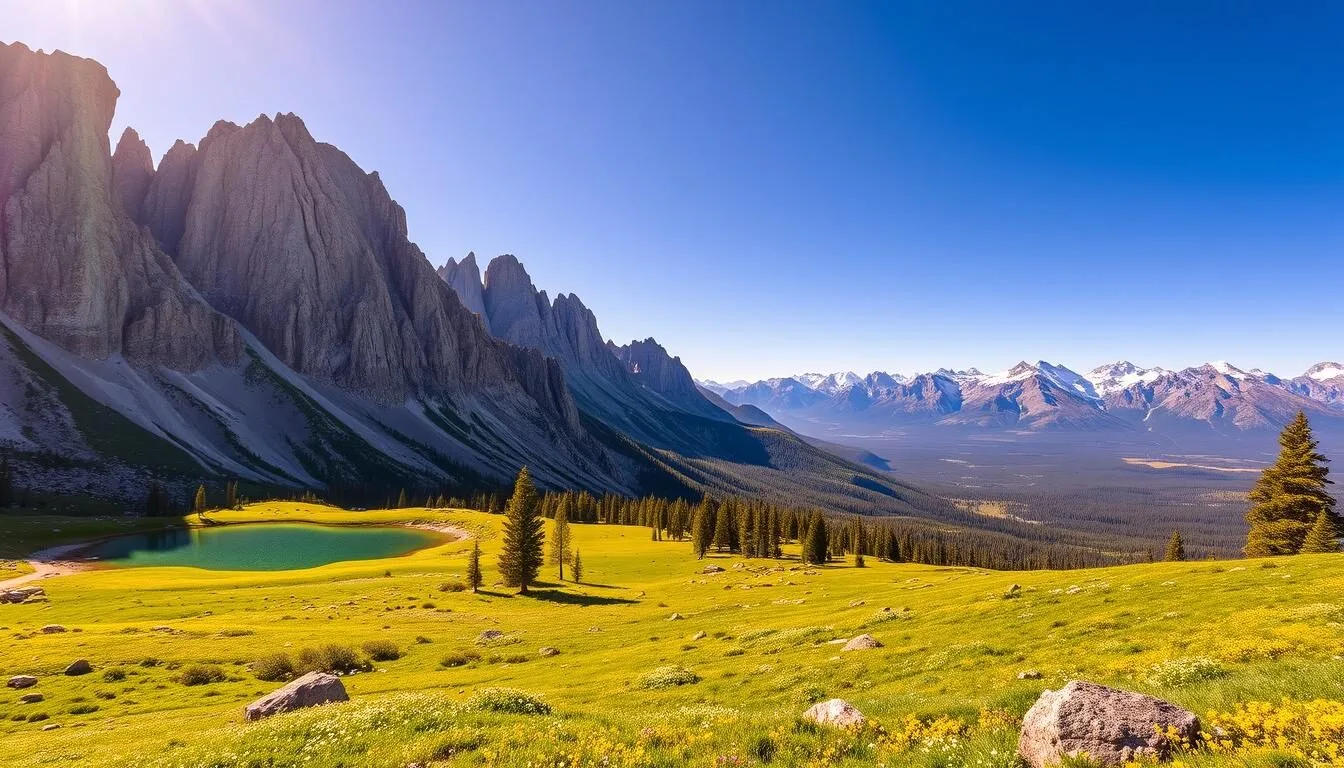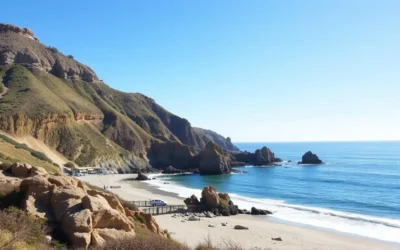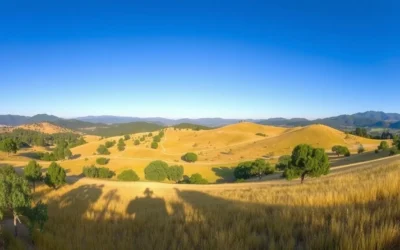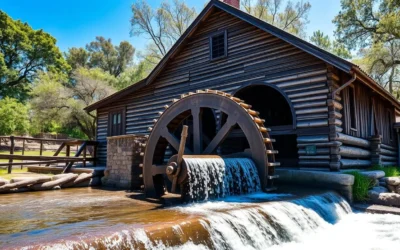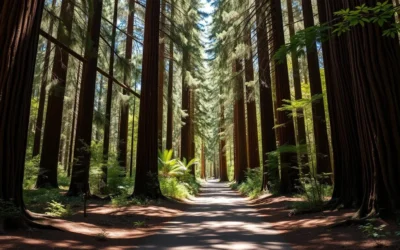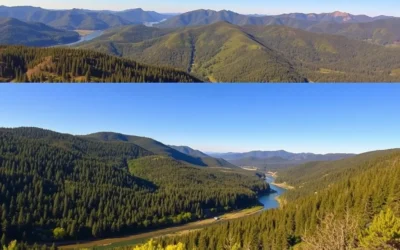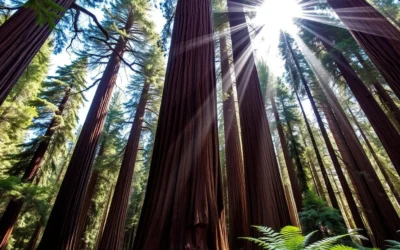✓ Accommodations✓ Flights✓ Rental Cars
Imagine standing amidst breathtaking landscapes, surrounded by the majestic beauty of the United States‘ most stunning mountain ranges. The Eastern Sierra Mountains offer an unparalleled experience, with diverse outdoor activities for all seasons. From world-class skiing to serene fishing spots, this region has something for everyone.
You can explore the area’s rich history, visiting ancient trees and historic towns that have preserved their charm. Whether you’re seeking adventure or relaxation, the Eastern Sierra’s unique blend of alpine beauty and desert landscapes makes it an ideal destination. Get ready to experience the natural wonderland that awaits you in this incredible region.
Discovering the Eastern Sierra Mountains
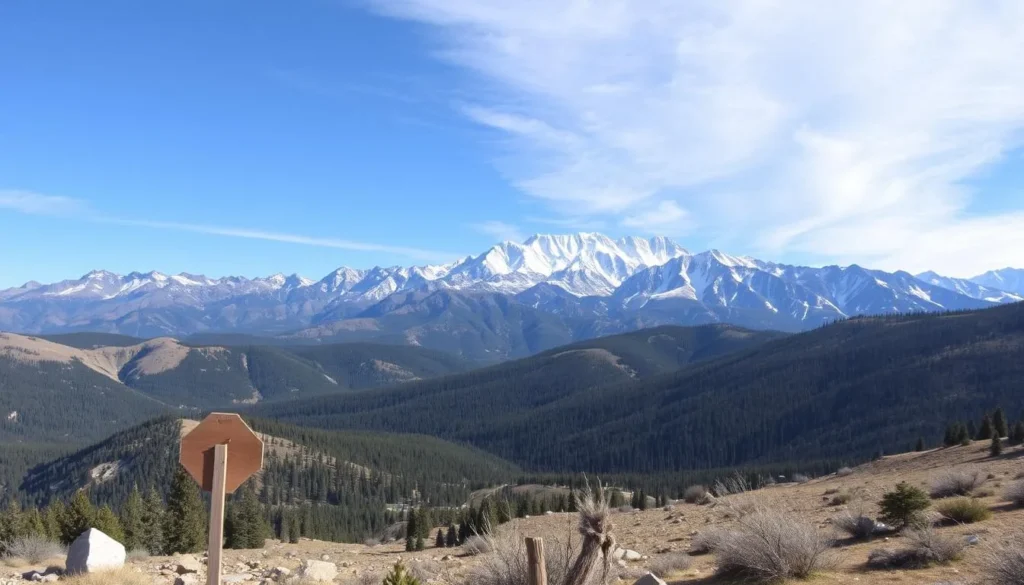
The Eastern Sierra Mountains, stretching over 400 miles, offer a dramatic landscape that captivates visitors. This unique area sits in the rain shadow of the Sierra Nevada, resulting in a diverse ecosystem that ranges from lush forests at higher elevations to arid desert at lower feet.
The mountains here rise dramatically from the valley floor, with many peaks soaring above 13,000 feet, creating a stunning backdrop that has captivated visitors for years. The Eastern Sierra’s natural beauty is accessible via scenic byways like Highway 395, a road that serves as the main artery through this spectacular country.
Throughout the region, you’ll find charming small towns that serve as gateways to wilderness areas, offering both amenities and a glimpse into the area’s rich mining and ranching heritage. The changing seasons bring different things to experience in the Eastern Sierra, from wildflower blooms in spring to golden aspen leaves in fall.
Explore Yosemite National Park
![]()
For those seeking an unforgettable experience in the Sierra Nevada mountains, Yosemite National Park is the perfect choice. Located just 12 miles from Mammoth Lakes, Yosemite is a must-visit destination for any Eastern Sierra adventure.
Must-See Landmarks in Yosemite
Yosemite National Park is home to many breathtaking landmarks. The park’s eastern entrance via Tioga Road (Highway 120) offers a less crowded experience, allowing you to enjoy the park’s natural wonders with more solitude. Must-see landmarks include Tuolumne Meadows, a subalpine meadow surrounded by granite domes and peaks, and Tenaya Lake, often called the “jewel of the high country.”
Best Hiking Trails for All Levels
For hiking enthusiasts, Yosemite offers trails for all levels. Trails like the Gaylor Lakes Trail (2 miles round trip) offer spectacular high-country views with relatively little effort, perfect for a day hike. More experienced hikers can tackle the Cathedral Lakes Trail (7 miles round trip) or venture to the summit of Lembert Dome for panoramic vistas of the surrounding wilderness.
Camping options abound in the eastern section of the park, with Tuolumne Meadows Campground serving as an excellent base for exploring this less-visited but equally stunning part of Yosemite National Park. The park’s diverse ecosystems support an incredible variety of plant and animal life, making it a nature lover’s paradise in any season.
Visit the Otherworldly Mono Lake
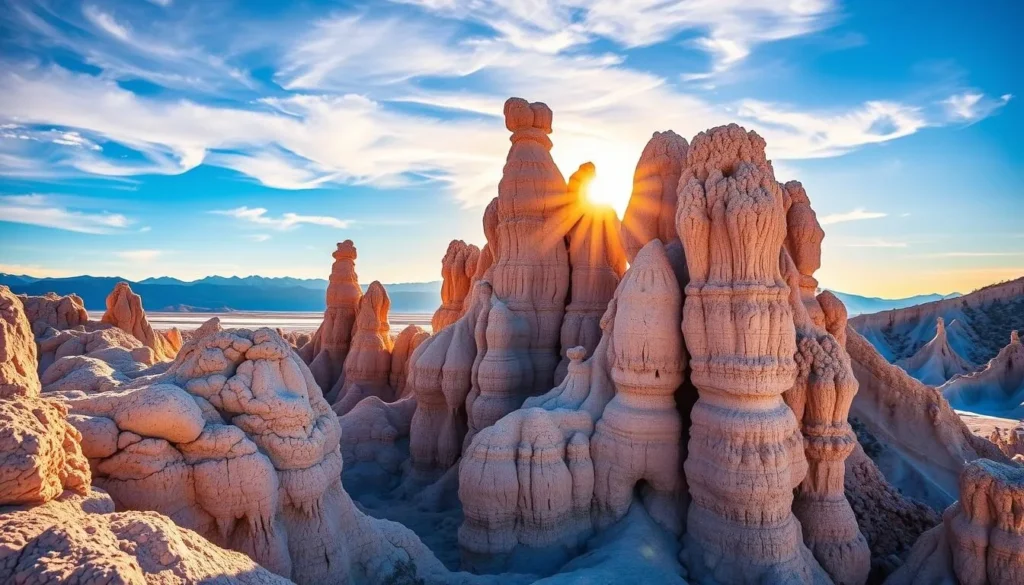
The saline waters of Mono Lake create a surreal landscape that’s unlike anywhere else. Located just off Highway 395 near the town of Lee Vining, Mono Lake is an ancient saline lake estimated to be over 760,000 years old, making it one of the oldest lakes in North America.
Exploring the Tufa Formations
The lake’s most distinctive feature is its tufa towers – calcium-carbonate rock formations that rise from the water’s surface, creating an otherworldly landscape. The Mono Lake Tufa State Natural Reserve protects the lake’s unique ecosystem and offers several access points to view the tufa formations, including South Tufa and Navy Beach.
Bird Watching Opportunities
Mono Lake is a haven for bird watchers, with over 300 species visiting throughout the year. The lake supports trillions of brine shrimp and alkali flies, serving as a crucial food source for millions of migratory birds. Peak migration periods in spring and fall offer spectacular opportunities to see California gulls, phalaropes, and grebes.
Soak in Natural Hot Springs
The Eastern Sierra region is renowned for its natural hot springs, a perfect blend of relaxation and scenic beauty. The area’s volcanic activity has created numerous hot springs, offering visitors a chance to soak in mineral-rich waters while enjoying spectacular mountain views.
Wild Willy’s Hot Spring
Wild Willy’s Hot Spring, also known as Crowley Hot Spring, is a popular spot featuring a heart-shaped pool with water temperatures around 95-105°F. It offers panoramic views of the Sierra Nevada mountains, making it a unique experience.
Hilltop Hot Springs
Hilltop Hot Spring, located about 3 miles south of Mammoth Lakes, provides a more intimate experience. The single concrete tub fits 4-6 people and offers stunning views of the Owens Valley.
Rock Tub and Buckeye Hot Springs
For those seeking seclusion, Rock Tub Hot Spring requires a short hike and features a stone-lined pool that blends beautifully with nature. Buckeye Hot Spring near Bridgeport offers a unique experience with hot mineral water cascading into pools alongside a cold mountain stream.
Most of these natural hot springs are on public land and free to access. Visitors are encouraged to practice “Leave No Trace” principles to preserve these special places. The best times to visit are early morning or weekdays to avoid crowds, and winter soaks offer a magical experience surrounded by snow.
Hit the Slopes at Mammoth Mountain

Experience the thrill of skiing at Mammoth Mountain, one of the premier ski resorts in the world. With 3,500 acres of skiable terrain and a summit elevation of 11,053 feet, Mammoth Mountain offers an unforgettable skiing adventure.
The mountain receives an average of 400 inches of snowfall annually, creating perfect powder conditions and one of the longest ski seasons in North America, often extending from November through June.
Winter Sports and Activities
Mammoth Mountain is a winter sports enthusiast’s paradise, featuring 150+ trails for all skill levels, from gentle beginner slopes to challenging chutes and bowls for expert skiers. The resort also boasts terrain parks that consistently rank among the best in North America.
The Panorama Gondola takes visitors to the summit year-round, offering breathtaking 360-degree views of the surrounding Sierra Nevada range and as far as Nevada on clear days.
Summer Adventures on the Mountain
In the summer, Mammoth Mountain transforms into an adventure playground with miles of mountain biking trails, including the famous Mammoth Bike Park with over 80 miles of singletrack for riders of all abilities.
The mountain’s base area features the lively Mammoth Village, where you can experience the fun après-ski atmosphere with restaurants, shops, and entertainment options after a day on the slopes.
Hike to the Summit of Mount Whitney
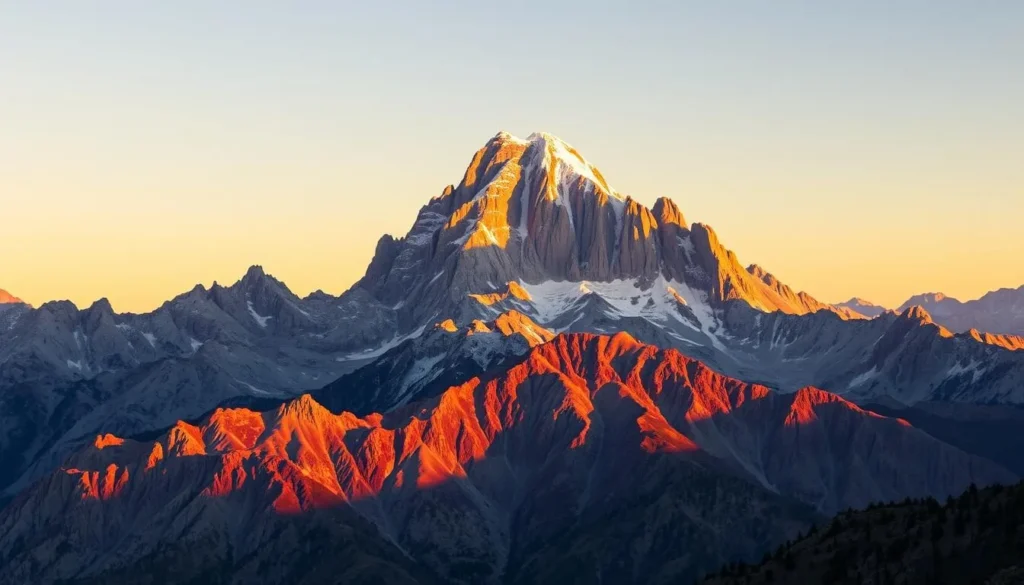
For adventure-seekers, hiking to the summit of Mount Whitney is an experience like no other. At 14,505 feet, Mount Whitney stands as the tallest peak in the contiguous United States, offering hikers the chance to stand on the roof of the Sierra Nevada mountains.
Preparing for the Climb
Proper preparation is essential for this adventure, including altitude acclimatization, physical conditioning, and appropriate gear for rapidly changing mountain weather conditions. The most popular route to the summit is the Mount Whitney Trail, a challenging 22-mile round-trip journey with over 6,100 feet of elevation gain.
Best Times to Visit
The best time to attempt Whitney is typically from July through September when the trail is mostly free of snow and ice. However, experienced mountaineers with proper equipment can tackle winter hikes. Permits are required year-round and are extremely competitive, with a lottery system for the quota period that opens on February 1 each year.
Camping options include Whitney Portal Campground at the trailhead (8,300 feet) or Outpost Camp and Trail Camp along the route, which help hikers adjust to the altitude and break up the journey. The panoramic views from the summit are truly spectacular, with endless peaks stretching in all directions.
Drive the Scenic June Lake Loop
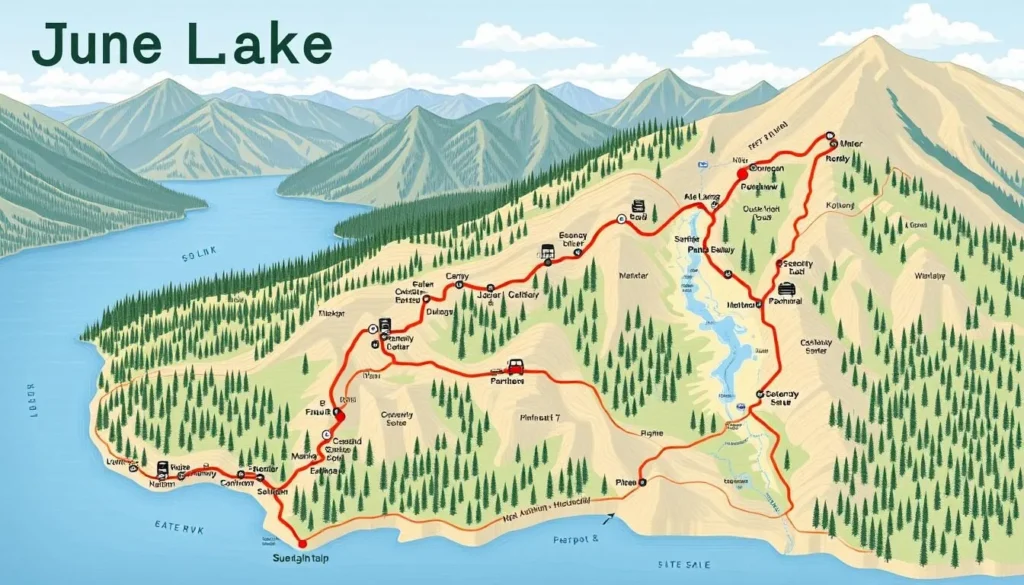
The June Lake Loop is a breathtaking 16-mile drive that showcases the Sierra Nevada’s natural beauty. This scenic byway branches off Highway 395, taking you through a picturesque mountain landscape dotted with four stunning alpine lakes.
Four Lakes to Explore
The June Lake Loop is home to four beautiful lakes, each offering a unique experience. You’ll start with June Lake, which features a mile-long beach, boat rentals, and a charming village with restaurants and shops. Next is Gull Lake, the smallest on the loop, known for excellent trout fishing and crystal-clear waters. Silver Lake provides dramatic scenery with Carson Peak rising above its shores, creating perfect mirror-like reflections. Finally, Grant Lake, the largest on the loop, is ideal for water sports and fishing, with a more natural, wild beauty.
Photography Spots Along the Way
The June Lake Loop is a photographer’s paradise, especially during fall when the aspen trees turn brilliant gold. You’ll find numerous viewpoints and short nature trails along the way, perfect for capturing the natural beauty of the Sierra Nevada mountains. Be sure to stop at Silver Lake for its dramatic scenery and mirror-like reflections.
Explore the Alabama Hills
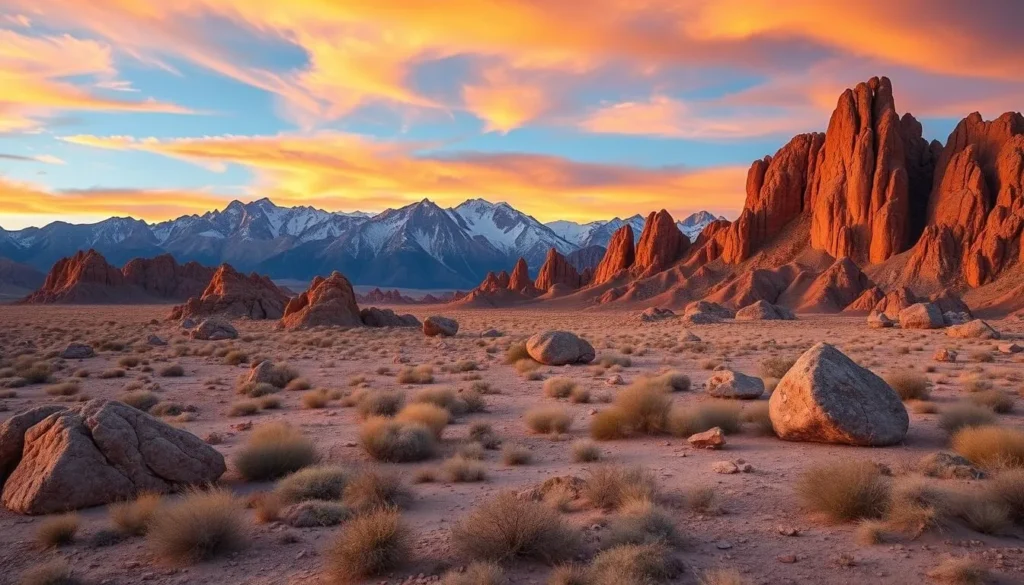
Located just west of Lone Pine, the Alabama Hills offer a unique blend of natural beauty and cinematic history. This area has been a filming location for hundreds of movies and TV shows over the years.
Famous Film Locations
The Movie Road self-guided tour takes you through famous filming locations, with informational plaques marking spots where iconic scenes were shot. You can relive moments from classic Westerns like “How the West Was Won” and modern films like “Iron Man” and “Django Unchained.”
Unique Rock Formations and Arches
The Alabama Hills are home to over 300 natural arches, with Mobius Arch being the most famous. It perfectly frames Mount Whitney, creating one of the most photographed views in the Eastern Sierra. The area offers miles of hiking trails, including the easy 0.6-mile Arch Loop Trail, allowing you to explore the labyrinth of rock formations and hidden canyons.
Eastern Sierra Mountains, California: Best Things to Do – Top Picks
From the peaks of the Sierra Nevada to the shores of Mono Lake, the Eastern Sierra region is a treasure trove of exciting experiences. The area offers a mix of outdoor adventures, cultural experiences, and historical landmarks that cater to different interests.
Outdoor Activities for Every Season
The Eastern Sierra region is a paradise for outdoor enthusiasts, with activities changing with the seasons. In winter, you can enjoy skiing and snowboarding, while summer brings hiking, fishing, and mountain biking opportunities. Spring is ideal for witnessing wildflower blooms and rushing waterfalls, and fall transforms the mountains with spectacular aspen colors.
- Skiing and snowboarding in winter
- Hiking and mountain biking in summer
- Wildflower blooms in spring
- Aspen colors in fall
Cultural and Historical Experiences
Beyond its natural beauty, the Eastern Sierra region is rich in cultural and historical experiences. You can explore museums and historical sites to learn about Native American heritage, mining booms, and the region’s unique development. The charming towns of Bishop, Bridgeport, and Lee Vining offer local shops, galleries, and farm-to-table cuisine.
| Location | Cultural Experience |
|---|---|
| Bishop | Explore local shops and galleries |
| Bridgeport | Visit historical sites and museums |
| Lee Vining | Enjoy farm-to-table cuisine |
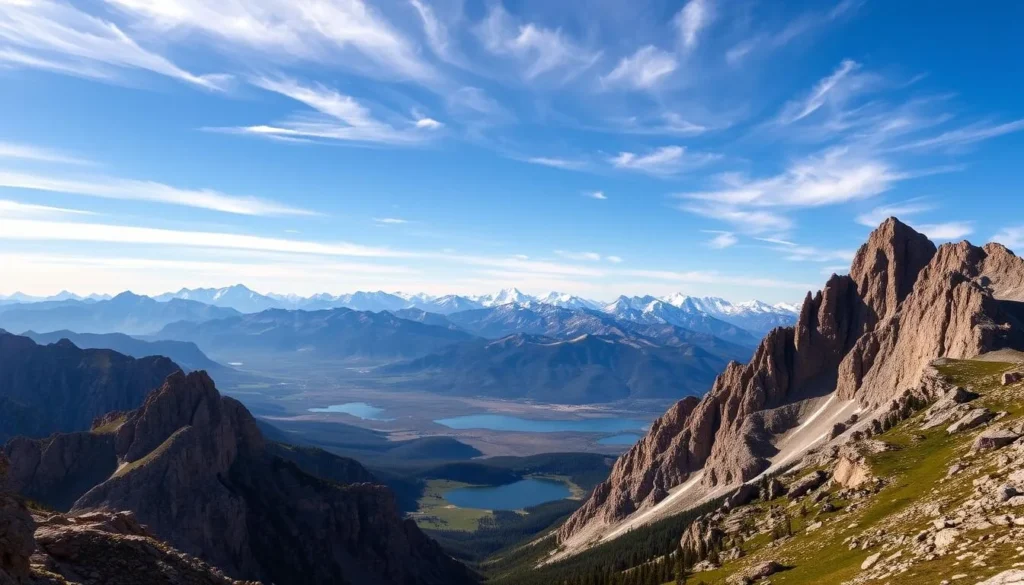
Discover Ancient Bristlecone Pine Forest
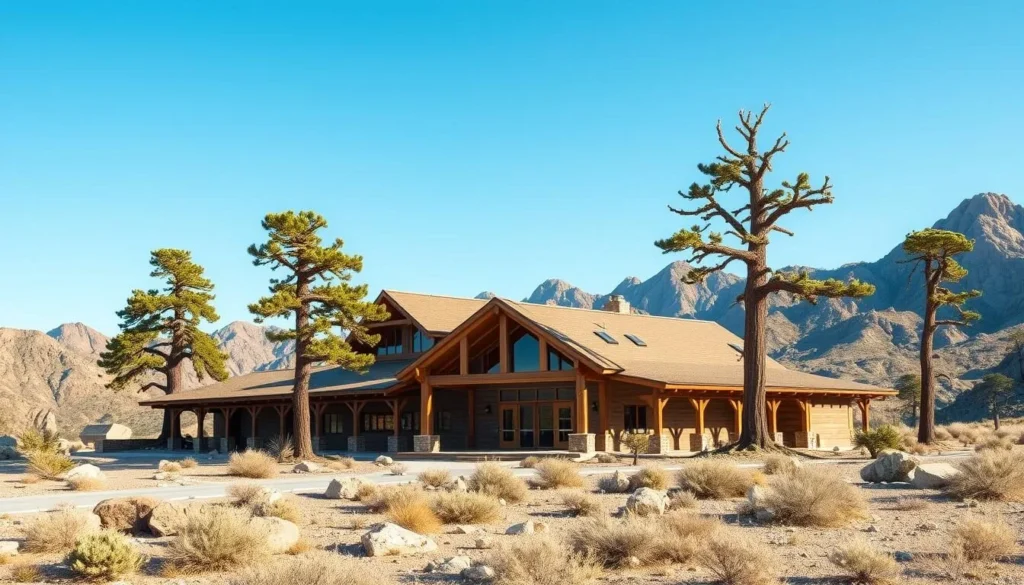
With trees that are older than the pyramids, the Ancient Bristlecone Pine Forest is an unforgettable experience that will connect you with nature and history. Located in the White Mountains east of the Sierra Nevada, this forest is home to the oldest living trees on Earth, with some specimens exceeding 4,000 years in age.
The World’s Oldest Trees
The gnarled, twisted trees grow at elevations between 10,000 and 11,000 feet in harsh conditions that have contributed to their longevity. The forest is divided into two main groves: the Schulman Grove, which contains the famous “Methuselah” tree, and the more remote Patriarch Grove.
Scenic Hiking Paths
Several well-maintained hiking trails wind through the groves, including the 1-mile Discovery Trail and the more challenging 4.5-mile Methuselah Trail. The trails offer interpretive signs that explain the trees’ remarkable history and biology, making it a great experience for nature lovers and history enthusiasts alike.
Explore the Inyo Craters
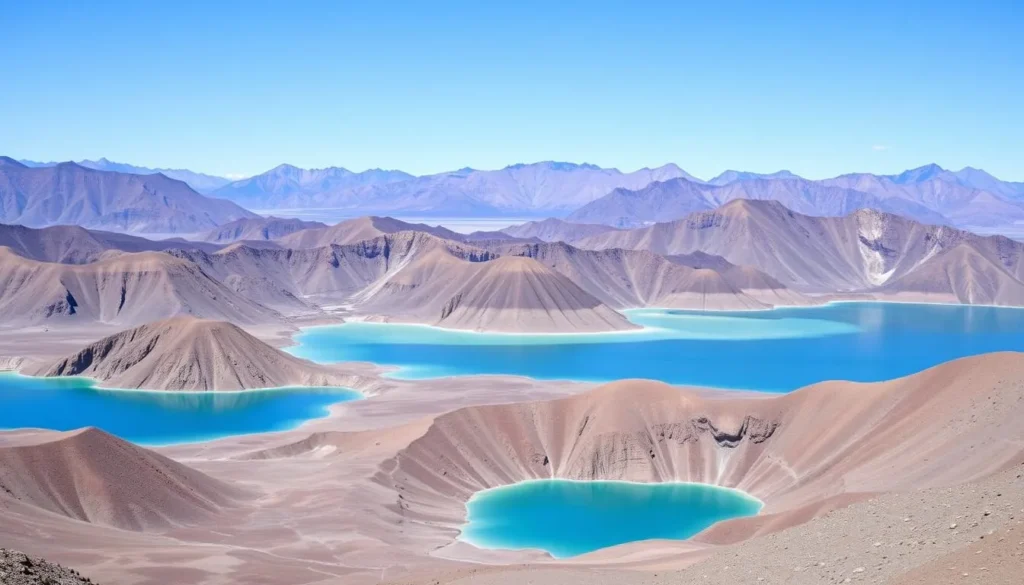
You can explore the Inyo Craters, a remarkable example of volcanic activity, on a scenic hiking trail. The Inyo Craters are a series of three volcanic explosion pits located just a few miles from Mammoth Lakes, formed approximately 600 years ago during the area’s most recent volcanic activity.
Geological Wonders
The craters contain small lakes with striking turquoise water created by minerals and algae, offering a fascinating glimpse into the Sierra Nevada‘s volcanic history. The largest crater has a mysterious blue-green lake about 130 feet below the rim, with steep walls that drop dramatically to the water‘s surface.
Family-Friendly Trails
The main trail to the craters is a 1.6-miles loop that’s relatively flat and well-maintained, making it an ideal hike for families with children or those looking for an easy but rewarding outdoor experience. The trail offers beautiful views of the surrounding mountains and peaks.
Fish in the Eastern Sierra Lakes and Rivers
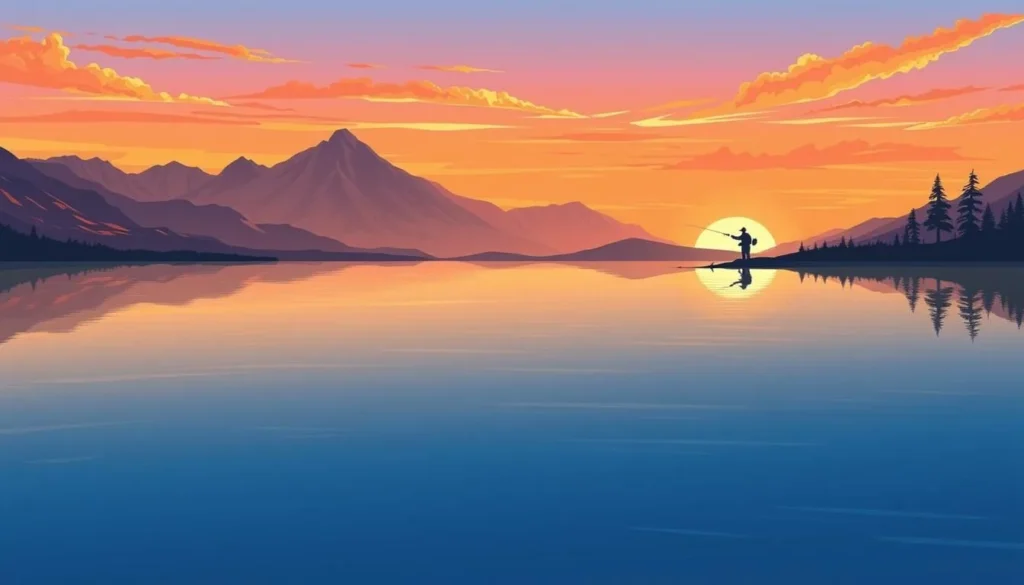
With its vast array of lakes and rivers, the Eastern Sierra is renowned for its exceptional fishing opportunities. The region is home to hundreds of lakes, streams, and rivers teeming with rainbow, brown, brook, and golden trout.
Top Fishing Spots
Crowley Lake is famous for its trophy-sized trout and opening day festivities. The Owens River offers diverse fishing experiences, from wild trout sections to accessible areas perfect for beginners. High alpine lakes provide solitude and the chance to catch native golden trout.
Fishing Seasons and Permits
The general fishing season runs from the last Saturday in April through November 15. All anglers 16 and older must possess a valid California fishing license. Special regulations may apply to different water bodies, so checking current rules before your trip is essential.
Visit Historic Towns and Ghost Towns
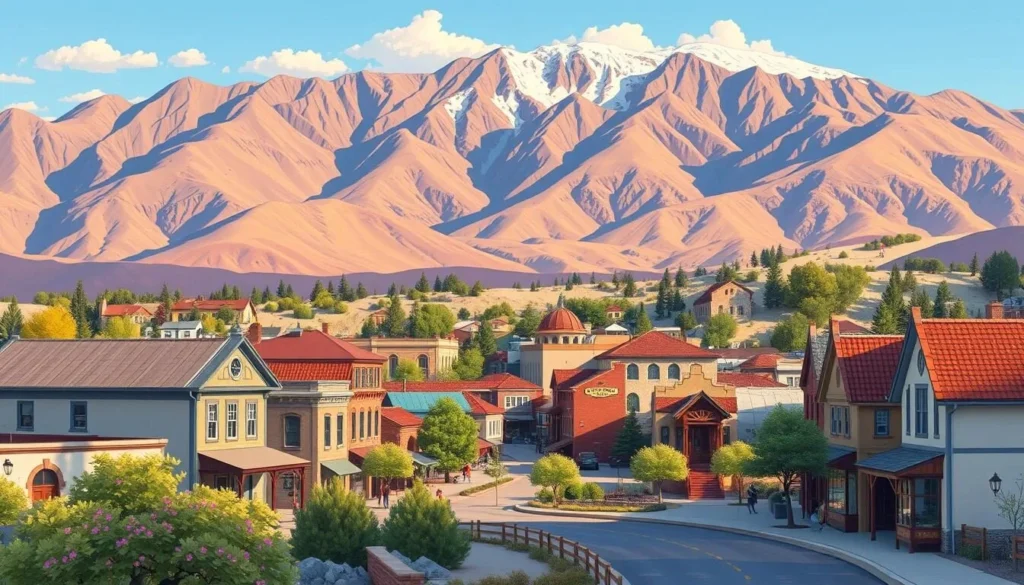
As you explore the Eastern Sierra region, you’ll discover fascinating historic towns and ghost towns. The region is dotted with abandoned mining settlements that offer a glimpse into California’s rich past, from the Gold Rush era to the early 20th century.
Bodie Ghost Town
Bodie State Historic Park preserves California’s most authentic ghost town in a state of “arrested decay.” With over 200 buildings still standing, you can walk the dusty streets and peer into buildings still furnished with original belongings. Experience the history of this former mining town, which once had 10,000 residents and 65 saloons during its 1880s heyday.
Historic Truckee and Bishop
The towns of Truckee and Bishop are steeped in history and offer a unique experience. Bishop, known as the “Mule Capital of the World,” celebrates its ranching and packing history with the annual Mule Days Celebration. You can stroll through the charming main street, visit historic buildings, and explore local shops and restaurants. Discover the rich history of the region by visiting these historic towns.
Camp Under the Stars

Camping in the Eastern Sierra is a nature lover’s dream, with options ranging from developed campgrounds to remote wilderness sites. The region offers a diverse range of camping experiences, with lakeside and wilderness options available.
Lakeside Campgrounds
Lakeside camping is particularly popular in the Eastern Sierra, with sites at June Lake, Convict Lake, and Twin Lakes offering the magical experience of falling asleep to the sound of lapping water and waking to misty mountain views. These campgrounds provide easy access to fishing and hiking trails, making them ideal for outdoor enthusiasts.
Wilderness Camping Adventures
For those seeking solitude, the Inyo and Humboldt-Toiyabe National Forests provide numerous dispersed camping opportunities where you can set up your tent far from crowds in pristine natural settings. The John Muir Wilderness, accessible from multiple trailheads throughout the Eastern Sierra, offers backpacking adventures to alpine lakes and meadows surrounded by dramatic mountain peaks.
Experience Winter Activities Beyond Skiing
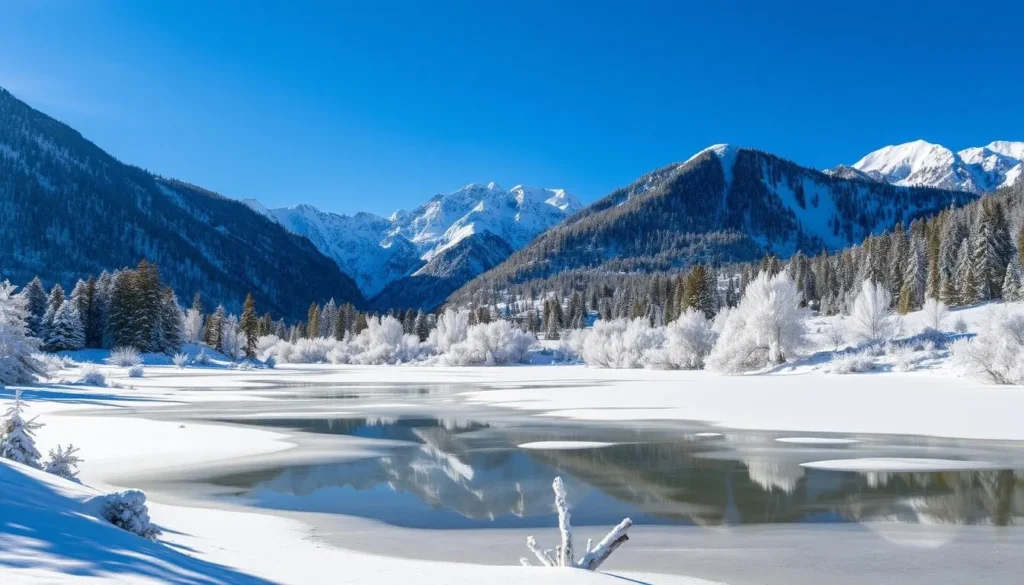
Beyond the slopes of Mammoth Mountain, the Eastern Sierra offers a diverse range of winter activities. While downhill skiing and snowboarding are popular, the region’s serene landscapes and varied terrain invite exploration through other means.
Snowshoeing and Cross-Country Skiing
Snowshoeing is an accessible winter activity for all fitness levels, with marked trails at Tamarack Cross Country Ski Center and throughout the Inyo National Forest. For those who prefer gliding across the snow, cross-country skiing trails abound, from groomed tracks to backcountry routes that venture into the winter wilderness.
Winter Photography and Wildlife Viewing
The Eastern Sierra in winter is a photographer’s paradise, with snow-draped landscapes, frozen waterfalls, and dramatic weather creating unique scenes. Wildlife viewing is also particularly rewarding, as animals like mule deer and bald eagles become more visible against the snowy backdrop.
The region’s hot springs become even more enchanting in winter, with steaming pools contrasting against the snowy surroundings. For a motorized adventure, guided snowmobile tours offer access to remote winter landscapes.
Conclusion: Planning Your Eastern Sierra Adventure
The Eastern Sierra region is a haven for outdoor enthusiasts and nature lovers alike. With its diverse landscapes and activities, this region offers something for everyone. From world-class skiing in winter to hiking and fishing in summer, the Eastern Sierra is a year-round destination.
When planning your trip, consider the seasonal accessibility of different attractions. Tioga Pass Road into Yosemite National Park typically closes from November through May. The main artery through the region is Highway 395, a scenic road that connects major destinations and offers spectacular views of the Sierra Nevada mountains.
With accommodations ranging from luxury resorts to rustic cabins and campgrounds, you’re sure to find the perfect fit. Whether you’re seeking adventure, relaxation, or natural beauty, the Eastern Sierra truly has it all, making it one of California’s most rewarding destinations at any time of year.
The above is subject to change.
Check back often to TRAVEL.COM for the latest travel tips and deals.
